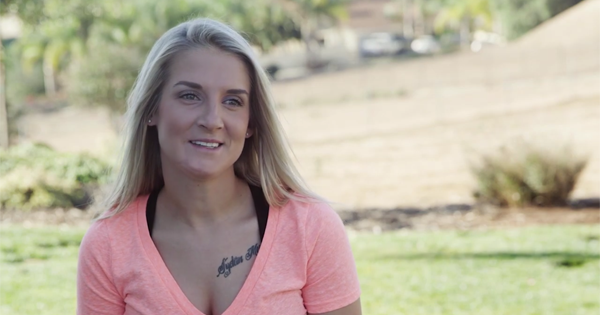Advertisement
In June 2012, 25-year-old Kirstie Ennis was on her second tour in Afghanistan, serving as a sergeant in the United States Marine Corps. Her helicopter went down, and the next thing she knew was an army medic speaking to her.
ŌĆ£DonŌĆÖt close your eyes ŌĆścause youŌĆÖre not going to open them again,ŌĆØ he told her.
Ennis survived the initial injury, but after returning home, she has undergone 38 ŌĆō soon to be 39 ŌĆō surgeries, as well as two years of speech and cognitive therapy.
SheŌĆÖs been mentally preparing for her 39th surgery for a long time because the procedure will remove her left leg below the knee. It would be a procedure that would, hopefully, reduce some of the chronic pain that had come to characterize her life and improve its quality.

Many of her previous surgeries tried to have her avoid this amputation, fusing bone or inserting bone grafts ŌĆō but none of it worked. It took a long time for Ennis to accept the fact that she would have to have her leg amputated, but she was able to finally put ŌĆ£[her] mind and heartŌĆ”at ease.ŌĆØ
ŌĆ£I can say that I tried,ŌĆØ she said.
The day before the procedure, Ennis spent her time walking around, barefoot, enjoying the things she would no longer be able to feel ŌĆō sand on the beach, water lapping at her toes, even sticking her feet into an ice bucket.
ŌĆ£IŌĆÖm not going to be able to feel any of these things again,ŌĆØ she explained. Having the final day to recreate these experiences allowed her to feel at ŌĆ£peaceŌĆØ with her body.
After the operation, Ennis felt ŌĆ£butterflies in [her] stomachŌĆØ when she first looked down at her new leg. ŌĆ£The thing that youŌĆÖve had for 24 years of your life is no longer there.ŌĆØ And yet, the severed nerves were still firing and causing her pain.
But it was only a month later that EnnisŌĆÖ amputation got infected. There was fluid draining out of her incision and her family rushed her to the emergency room.
Ennis had a life-threatening infection ŌĆō sepsis ŌĆō and would have to remove her knee to save her life.

That day, she remembered going into the emergency room kicking and screaming. She didnŌĆÖt want to be woken up from the surgery because she didnŌĆÖt want to deal with the aftermath of losing her knee.
In regards to amputations, the knee was a ŌĆ£game changer,ŌĆØ particularly when it came to relearning how to walk.
But EnnisŌĆÖ family rallied around her and all flew to be by her side as she stayed in the hospital, keeping her ŌĆ£groundedŌĆØ and ŌĆ£hold[ing] her hand through all of this.ŌĆØ
Though the journey was tough, Ennis was ultimately able to be refitted with a prosthetic leg and learned, fairly quickly, how to walk again. It was an experience that made her incredibly emotional, but one that was well-timed.
ŌĆ£I was struggling with where I thought I should be,ŌĆØ she admitted. ŌĆ£...I realize I have to be patient with [my recovery].ŌĆØ
Now, Ennis is ŌĆ£happyŌĆØ and ŌĆ£proudŌĆØ of everything sheŌĆÖs done ŌĆō both for herself and in the military. She continues to refuse letting her amputation slow her down and has made definite plans to become the first female amputee to climb the Carstensz Pyramid in Oceania this year.
You can watch a documentary of her journey here:




